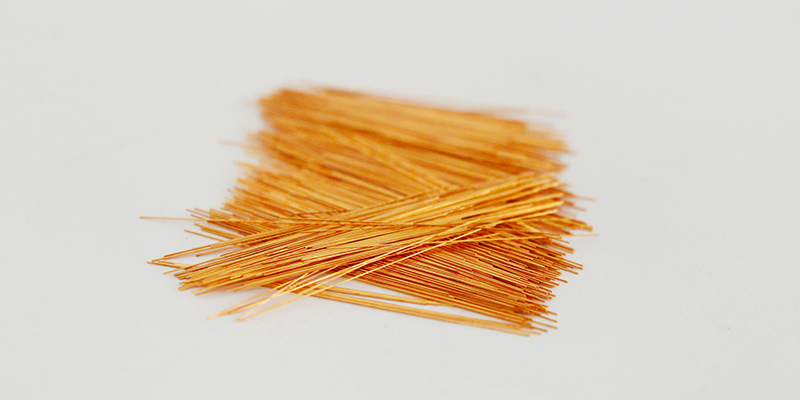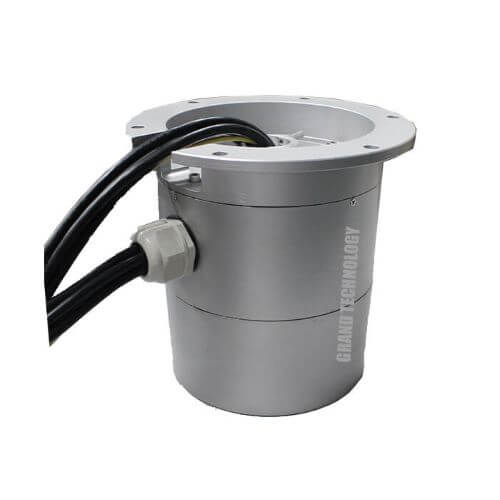In the world of do-it-yourself (DIY) enthusiasts and inventors, the quest for innovative solutions knows no bounds. One such remarkable project gaining momentum is the DIY pancake slip ring. By combining resourcefulness and technical know-how, creative individuals have devised their own versions of pancake slip rings, revolutionizing power and data transmission in rotating systems. In this article, we delve into the fascinating world of DIY pancake slip rings, exploring their features, applications, and the exciting possibilities they hold.
Unveiling the DIY Pancake Slip Ring
The DIY pancake slip ring has emerged as a game-changer, offering an alternative solution to the challenges faced in transmitting power and data across rotating and stationary components. Traditionally, slip rings have been complex and costly devices, limiting their accessibility to hobbyists and small-scale projects. However, the advent of DIY pancake slip rings has disrupted this norm, allowing enthusiasts to create their own compact and affordable versions of these vital components.
Why DIY Pancake Slip Ring
Creating a DIY pancake slip ring can be beneficial for several reasons:
Cost Savings
Affordable: Building your own slip ring can be much cheaper than purchasing commercial slip rings, especially for custom applications.
Reuse Materials: You can often use materials you already have, further reducing costs.
Customization
Specific Requirements: DIY allows you to tailor the slip ring to meet specific needs, such as the number of circuits, size, and shape.
Experimentation: You can experiment with different designs and materials to optimize performance for your particular application.
Learning Experience
- Educational: Building a slip ring from scratch provides a hands-on learning experience in electrical and mechanical engineering.
- Skill Development: It helps in developing practical skills like soldering, machining, and problem-solving.
Availability
Immediate Solution: If you need a slip ring quickly and cannot wait for shipping or do not have access to commercial options, a DIY approach can provide an immediate solution.
Flexibility
Modifications: You can easily modify and adapt your design as your project evolves.
Prototyping: DIY slip rings are great for prototyping new ideas and concepts before committing to more expensive commercial solutions.
Fun and Satisfaction
Creative Process: Building your own device can be a fun and rewarding creative process.
Sense of Achievement: Successfully creating a working slip ring from scratch can provide a great sense of accomplishment.
Environmental Considerations
Sustainability: Using recycled or repurposed materials can be more environmentally friendly than purchasing new components.
Creating a DIY pancake slip ring is a practical, educational, and cost-effective way to meet your specific needs while providing a fulfilling project experience.
How It Works
At the heart of the DIY pancake slip ring lies an ingenious design that enables continuous power and data transmission during rotation. This compact slip ring consists of a stationary part and a rotating part, similar to its commercial counterparts. However, the DIY approach focuses on simplicity and adaptability.
The stationary part typically consists of a central shaft or hub mounted on the non-rotating component. It houses the necessary electrical connections, such as rings, brushes, or conductive tracks, which make contact with the rotating part.
The rotating part, often a disc-shaped structure, is attached to the rotating component of the system. It features a set of brushes, spring-loaded contacts, or sliding contacts that maintain electrical continuity as the system rotates. These contacts ensure the seamless transmission of power, signals, and data, enabling uninterrupted operation of rotating machinery.

DIY Pancake Slip Ring Materials Needed
- Conductive Rings: Thin copper or brass rings
- Insulating Material: Thin sheets of plastic or fiberglass
- Brush Contacts: Thin wires or spring-loaded brushes
- Rotary Base: A small lazy Susan bearing or similar rotary mechanism
- Wiring: Thin gauge wires
- Adhesive: Epoxy or strong adhesive
- Soldering Equipment: Soldering iron and solder
- Tools: Wire cutters, pliers, screwdriver, and drill

DIY Pancake Slip Ring Step-by-Step Instructions
- Design and Planning:
- Sketch the design of your slip ring. Determine the number of conductive rings you need based on the number of circuits you want to pass through the slip ring.
- Prepare the Conductive Rings:
- Cut the copper or brass sheets into thin, concentric rings. Ensure they are flat and smooth.
- Create the Insulating Layers:
- Cut insulating material into rings slightly larger than the conductive rings. These will separate the conductive layers.
- Assemble the Rings and Insulators:
- Stack the conductive rings and insulating layers alternately. Ensure no two conductive rings touch each other. Use epoxy to glue them together securely.
- Attach the Rotary Base:
- Fix the stacked rings onto the rotary base. Ensure the assembly is centered and balanced.
- Install the Brush Contacts:
- Attach the brush contacts to the stationary part of the assembly. Position them to make contact with each conductive ring. The brushes should be spring-loaded or flexible to maintain contact as the ring rotates.
- Wiring:
- Solder wires to each conductive ring and corresponding brushes. Make sure the wires are securely attached and insulated to prevent short circuits.
- Testing:
- Connect the slip ring to your circuit and test for continuity and proper function. Rotate the slip ring and check that the signal or power passes through without interruption.

Tips:
- Precision: Ensure all rings and insulators are cut precisely to maintain good electrical isolation and contact.
- Balance: Keep the assembly balanced to avoid wobbling during rotation.
- Safety: Insulate all exposed conductive parts to prevent short circuits or electrical shocks.
Applications and DIY Innovations
The DIY pancake slip ring holds tremendous potential across a wide range of applications, opening doors for innovative projects and inventions. Let’s explore some of the key areas where DIY enthusiasts are utilizing pancake slip rings:
Robotics and Drones: DIY pancake slip rings are particularly valuable in the robotics and drone sectors. Enthusiasts can use these slip rings to transfer power and data between rotating joints, enabling smooth and continuous movement of robot arms or propellers. This innovation enhances the capabilities of DIY robotic systems and drone projects, enabling creators to explore dynamic and complex maneuvers.
Photography and Videography: In the world of photography and videography, DIY pancake slip rings find application in motorized camera rigs or rotating platforms. These slip rings facilitate the seamless transmission of power and data between the camera and external devices, such as lighting equipment or remote controls. As a result, photographers and videographers can capture stunning images and videos with enhanced flexibility and control.
Art Installations and Display Systems: DIY pancake slip rings inspire creativity in art installations and rotating display systems. Artists and makers can incorporate these slip rings to power rotating elements, interactive sculptures, or kinetic installations. The ability to transmit power and signals without the limitations of tangled cables allows for captivating and immersive visual experiences.
Challenges and Considerations
While DIY pancake slip rings offer exciting possibilities, there are challenges and considerations that makers must navigate:
Design Complexity: Developing a DIY pancake slip ring requires a solid understanding of electrical circuits, mechanical design, and precision engineering. The design must ensure consistent contact between the rotating and stationary parts, considering factors like brush wear, signal interference, and mechanical stability. Makers need to invest time and effort in designing a slip ring that meets their project’s specific requirements.
Signal Integrity: Maintaining signal integrity can be challenging in DIY slip ring projects, especially when transmitting sensitive signals or high-frequency data. Factors like noise, signal loss, and interference can impact data reliability. Makers must carefully consider signal shielding, grounding techniques, and appropriate wire gauges to mitigate these challenges and ensure optimal performance.
Mechanical Constraints: DIY pancake slip rings are typically compact in size, which may introduce mechanical constraints. The size limitations can impact the number of electrical connections, signal types, and current-carrying capacity. Makers must balance the desired functionality with the physical constraints imposed by the slip ring’s size.

The DIY Community: Sharing Knowledge and Inspiring Innovation
The DIY pancake slip ring movement thrives on collaboration, knowledge-sharing, and community support. Online forums, maker spaces, and social media platforms have become breeding grounds for creative exchange, troubleshooting challenges, and showcasing DIY slip ring projects. This collaborative environment encourages makers to embark on their own DIY journeys, pushing the boundaries of what is possible.
The DIY pancake slip ring represents a remarkable achievement in the world of rotating systems. By creating their own compact and affordable slip rings, DIY enthusiasts are revolutionizing power and data transmission in a wide range of applications. Although DIY slip rings come with challenges, such as design complexity and signal integrity, the creativity and resourcefulness of the maker community continue to drive innovation forward.
As the demand for seamless power and data transmission in rotating systems continues to grow, we can expect further advancements and innovations in DIY pancake slip ring technology. This DIY approach empowers individuals to explore new frontiers, unlock possibilities, and contribute to the ever-expanding realm of rotating machinery. The future holds exciting prospects for the DIY pancake slip ring, inspiring a new generation of inventors and revolutionizing industries with their ingenuity.
See What We Can Do
